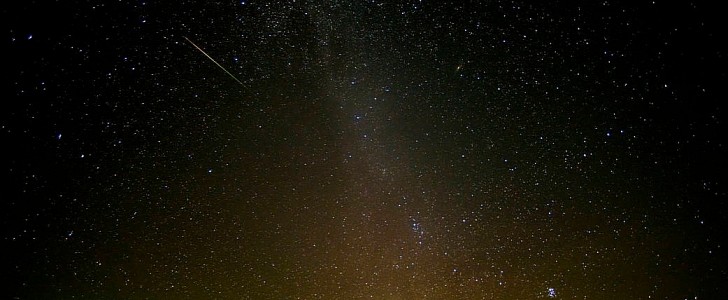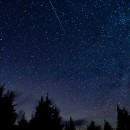The Perseid meteor shower is here! Considered one of the greatest astronomic night shows of the year due to its high rates and often fireballs that blaze across the sky, this year’s celestial event has just started, and it will continue to follow through until the end of August. So, go stargazing and ...make a wish!
The main stars of the light show are the meteors. Known as the Perseids, they take their name after the constellation Perseus, which they appear to come from when they lit up in the night (keep in mind that they do not actually come from the constellation). They are actually fragments of the comet Swift–Tuttle that have been left behind as it travels along its 133-year orbit.
Every year, as our planet passes through these debris trails, the fragments hit Earth’s atmosphere and disintegrate, resulting in blazing, colorful streaks across the sky. This spectacle is visible from mid-July to mid-August, with a peak in activity between 9 and 14 August.
During the peak, up to 60 meteors can fall in one hour. According to NASA, if the sky is clear, people can actually spot about 100 shooting stars per hour. The Perseids can be viewed from all across the globe, but they are most visible in the Northern Hemisphere. Stargazers should keep an eye out for them during the pre-dawn hours, however meteors from the shower can sometimes be seen as early as 10 p.m.
What should also be on their radar are the Perseids fireballs. They are larger, brighter blasts of color and light that can last longer than a regular meteor streak. Fireballs are the result of larger comet particles burning out in our atmosphere.
Not all the shooting stars will be Perseids. Some are regular meteors that hit our planet, while others might come from weaker showers, such as the Alpha Capricornids, the Southern Delta Aquariids, and the Kappa Cygnids, which happen to be active around the same time as the Perseid shower.
To find it out if the shooting star just witnessed is a Perseid, you can trace its streak backward and see if it comes from the constellation Perseus. If finding constellations isn’t your forte, NASA says that you can tell them apart from other meteors because they burn out in our atmosphere faster.
This summer’s Perseid meteor shower can be viewed from any location where there are no bright lights around, that is, provided that the sky is clear. You don’t need any special equipment to view the natural fireworks above, just lay back and enjoy the show! Oh, and don’t forget to make a wish!
Every year, as our planet passes through these debris trails, the fragments hit Earth’s atmosphere and disintegrate, resulting in blazing, colorful streaks across the sky. This spectacle is visible from mid-July to mid-August, with a peak in activity between 9 and 14 August.
During the peak, up to 60 meteors can fall in one hour. According to NASA, if the sky is clear, people can actually spot about 100 shooting stars per hour. The Perseids can be viewed from all across the globe, but they are most visible in the Northern Hemisphere. Stargazers should keep an eye out for them during the pre-dawn hours, however meteors from the shower can sometimes be seen as early as 10 p.m.
What should also be on their radar are the Perseids fireballs. They are larger, brighter blasts of color and light that can last longer than a regular meteor streak. Fireballs are the result of larger comet particles burning out in our atmosphere.
Not all the shooting stars will be Perseids. Some are regular meteors that hit our planet, while others might come from weaker showers, such as the Alpha Capricornids, the Southern Delta Aquariids, and the Kappa Cygnids, which happen to be active around the same time as the Perseid shower.
To find it out if the shooting star just witnessed is a Perseid, you can trace its streak backward and see if it comes from the constellation Perseus. If finding constellations isn’t your forte, NASA says that you can tell them apart from other meteors because they burn out in our atmosphere faster.
This summer’s Perseid meteor shower can be viewed from any location where there are no bright lights around, that is, provided that the sky is clear. You don’t need any special equipment to view the natural fireworks above, just lay back and enjoy the show! Oh, and don’t forget to make a wish!






